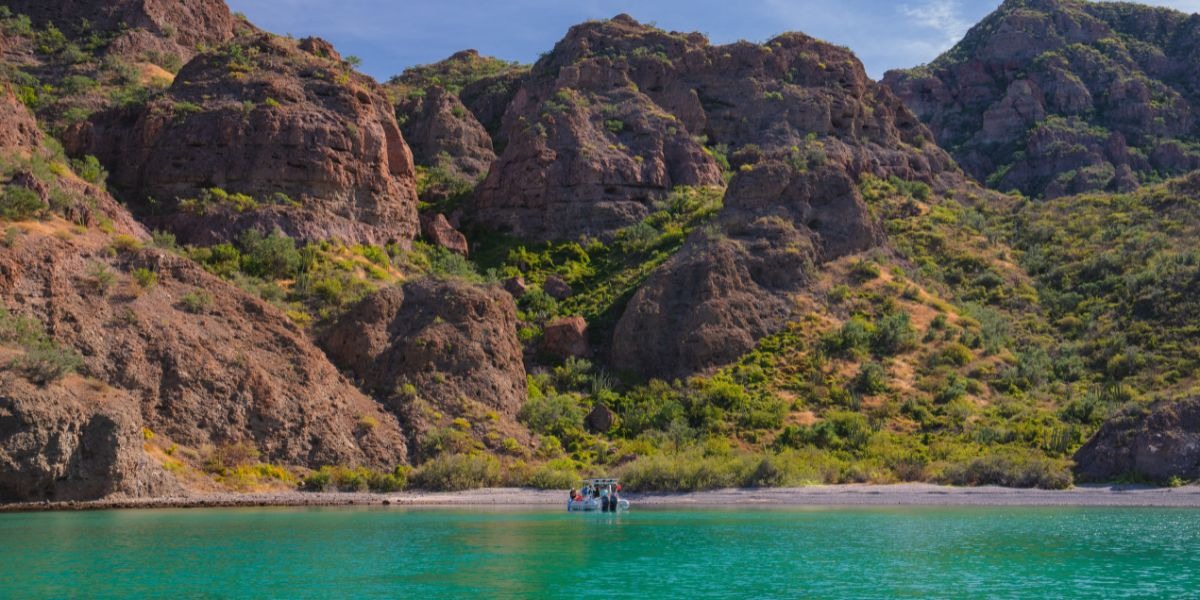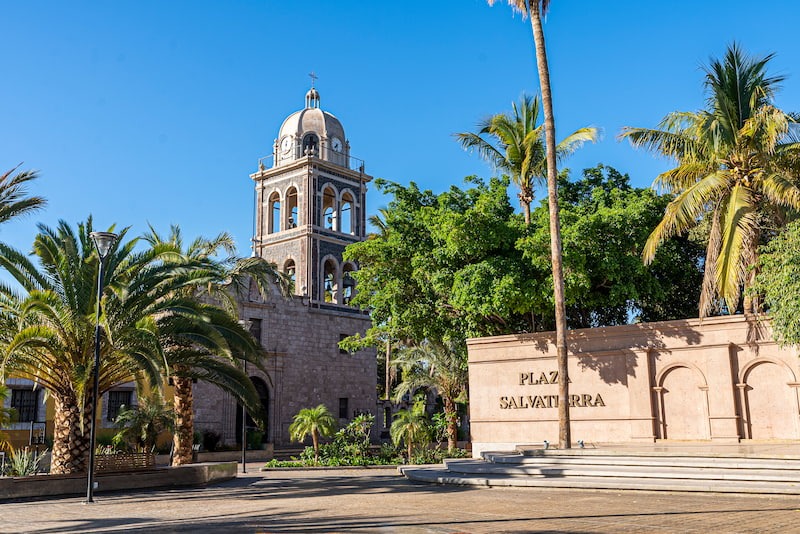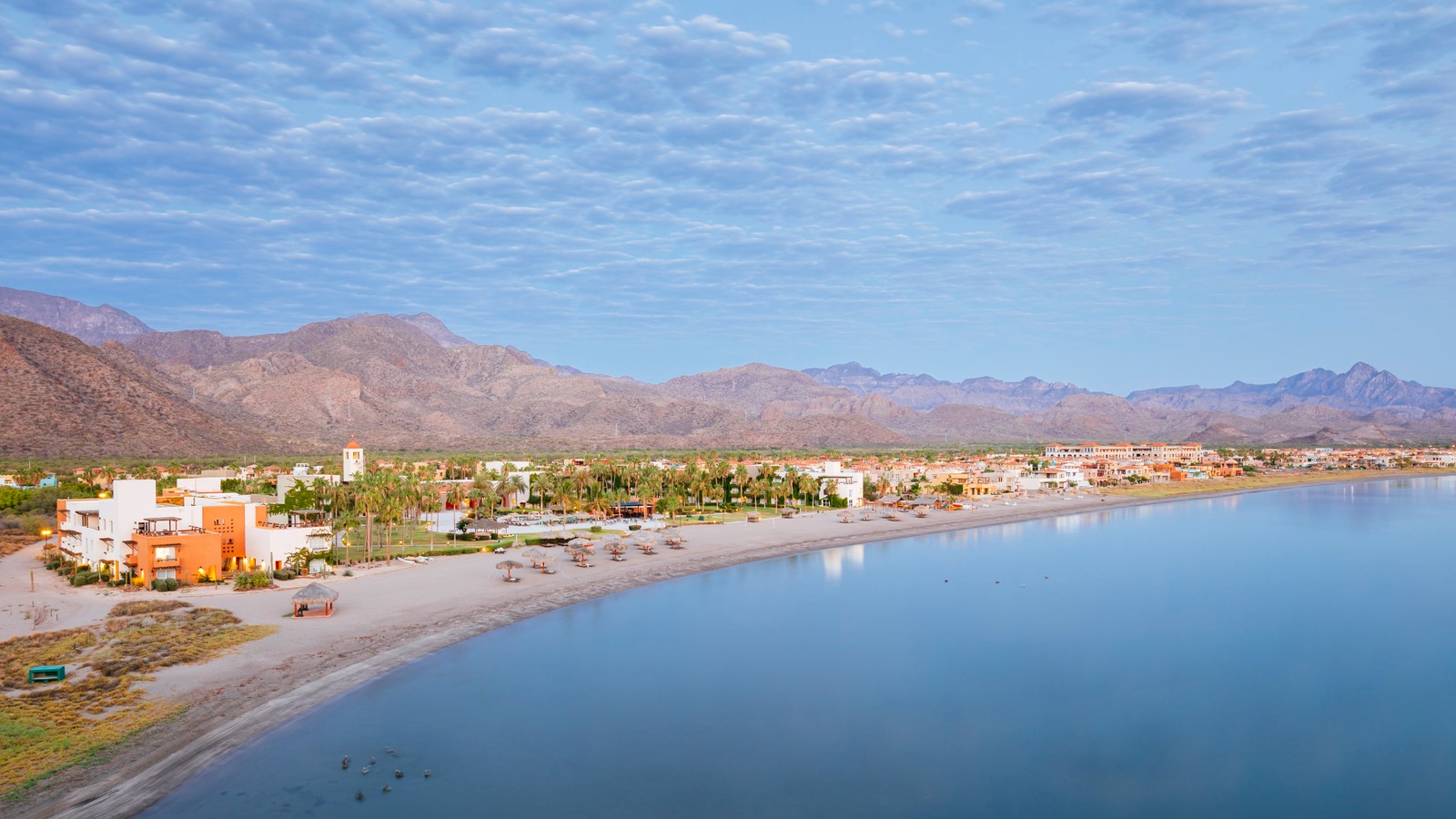“The landscape is like nothing else,” explains our guide Victor as we head from the airport to Loreto Baja California Sur, “but in these cacti there are owls and woodpeckers, and in the Arroyos, the valleys, large horned sheep, gray foxes, mule deer, raccoons and mountain lions.”The green and golden hills dotted with lanky Cardoon cacti, Copal bushes and prickly chain-link Cholla seem as static as a Western movie set to my untrained eyes. The city of Loreto and the surrounding towns of Baja California Sur have their own surprises and I was more than willing to appreciate them all.
The best things to do in Loreto-Baja California Sur
At least I had a guide. When the Jesuit priests arrived in Baja California Sur in 1697, they had high hopes, no money and the promise of building a Camino Real, a royal road, for the King of Spain. The first Mission they built was the Misión de Nuestra Señora de Loreto Conchó, in the center of what would become the city of Loreto.
Misión De Nuestra Señora De Loreto Conchó

This beautifully restored stone church near the town square still welcomes the faithful today. Her bells are ringing on time. For a city of 15,000 souls, the church is a lively place. Celebrations and services take place every day and continue until the evening, when the Church lights fall on the street. The church park houses a museum displaying the first artifacts, as well as a small gift shop selling finely crafted religious souvenirs. It was the first of the missions to extend from Baja California Sur across the border to San Francisco, 1,400 miles away, along the Camino Real.
Of course, the Jesuits were not the first to live in Loreto. They were welcomed by the Monqui, the indigenous peoples of Baja California Sur, who had lived there for thousands of years and were very satisfied with their nomadic lifestyle and polygamous culture. The Monqui were enlisted by the Jesuits to build the missions that provided them with a reliable source of food and the promise of salvation, but in less than a Hundred Years their small population was decimated by European diseases.
Petroglyphs and pictograms

Their culture is preserved in the form of petroglyphs and pictograms on several sites around Loreto. The two closest sites to the city are in Cuevas Pintas, 15 km to the west, and La Pingüica, 60 km to the north.
Many tour operators in the city organize tours of the sights. On my first day in Loreto, I made the one-hour trip and the two-hour hike to see the pictograms and petroglyphs at the Pingüica with Juve Orozco from Sea and Land Tours. Our group climbed over dry stream beds and wandered through sandy washes filled with many species of cacti, shrubs filled with butterflies and trees filled with cat-claw vines. Juve was generous with its knowledge of the terrain and the flora. He told us to beware of cat claws or the Uña de Gato. It is a woody vine that the natives of Baja California Sur used to cure indigestion and inflammation. But his thorns are as sharp as his name and we made a big bow around him.

When we arrived at the site, Juve pointed out the fine details of the painted petroglyphs, some of which were symbolic and others clearly showed animals and people in motion. The protected environment and the dry environment kept the bright colors. A little further on the rocky Arroyo, he showed us geometric patterns that had been chosen on the rocks thousands of years ago to form petroglyphs. The most impressive cave paintings of Baja California Sur can be found in the UNESCO-designated caves, located high in the Sierra de San Francisco Mountains, but they can only be reached by a three-day hike on mules or horseback. You will find these larger-than-life images of Loreto’s indigenous past reproduced in concrete on the pedestrian street leading to the Malecon, the Loreto beach wall.

